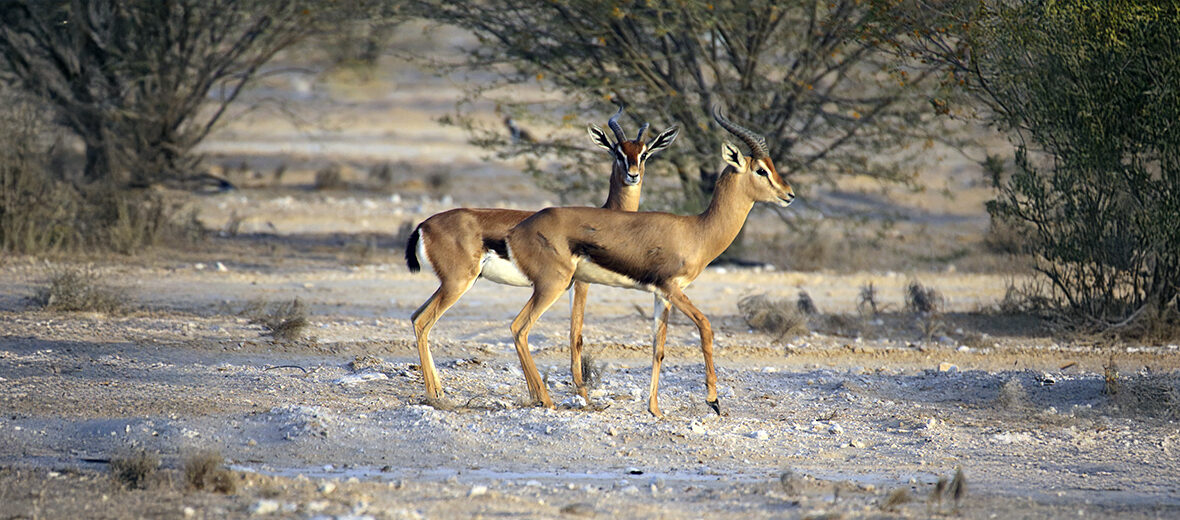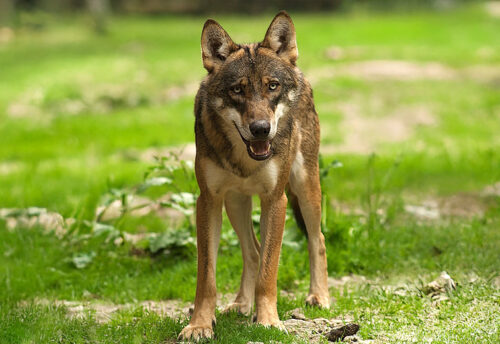
The Arabian gazelle, aka Erlanger’s gazelle or Neumann’s gazelle, hails from the Arabian Peninsula. There are only an estimated 7,000 individuals left in the wild, to date. They face the threats of habitat loss from farming and ranching, which can also result in overgrazing from farm animals, like sheep, cattle, and goats; hunting, for their meat; and trapping for use in the illegal pet trade. The IUCN lists these gazelles as Vulnerable. Their population trend is listed as decreasing.
First the Stats…
Scientific name: Gazella arabica
Weight: Up to 66 lbs.
Length: Up to 3.7 feet
Height: Up to 35.4 inches, at the shoulder
Lifespan: Up to 15 years
Now on to the Facts!
1.) They were first described by the Swedish zoologist Carl Linnaeus in 1758, though they were described as the name Gazella dorcas in what would later become the dorcas gazelle.
2.) These gazelles prefer grasslands, shrublands, and other desert habitats.
3.) Flowers and fruits of acacia trees, and leaves of other trees and shrubs are all grazed upon.
4.) Being slightly picky eaters, they prefer woody plants over grasses.
5.) Their habitat is shared with numerous other herbivores, such as Dorcas gazelles, mountain gazelles, Nubian ibex, Asiatic wild asses, and Arabian oryx.
But wait, there’s more on the Arabian gazelle!
6.) The Arabian wolf is their primary predator.
7.) These gazelles are crepuscular (active at dawn and dusk).
Did you know…?
Sans the previously mentioned threats, climate change is also to blame for their diminishing numbers. As it can cause extreme droughts, which results in a reduction in plant growth and thus a loss in food availability.
8.) Numerous individuals have been found with antibodies to the parasite toxoplasmosis. This is the same parasite that is present in up to 30% of mammals, including domestic cats. It comes from direct contact with feces that contain the parasite. Toxoplasmosis can cause fever, swollen lymph nodes, muscle aches, and headache. In some instances it can also cause brain damage, eye problems, and seizures when passed on from pregnant humans.
9.) Females undergo up to a 180 day gestation (pregnancy) that yields a single calf.
10.) Protection efforts include establishment of protected areas and reserves, enforcement of hunting bans, and programs for captive breeding and reintroduction into the wild. However, challenges exist, like inconsistent enforcement of laws and threats from humans like tourism and infrastructure development.
Now a Short Arabian Gazelle Video!
This video talks about gazelles in general.
Be sure to share & comment below! Also, check out the Critter Science YouTube channel. Videos added regularly!

Want to suggest a critter for me to write about? Let me know here.
Some source material acquired from: Wikipedia & IUCN
Photo credit: Ubm007



